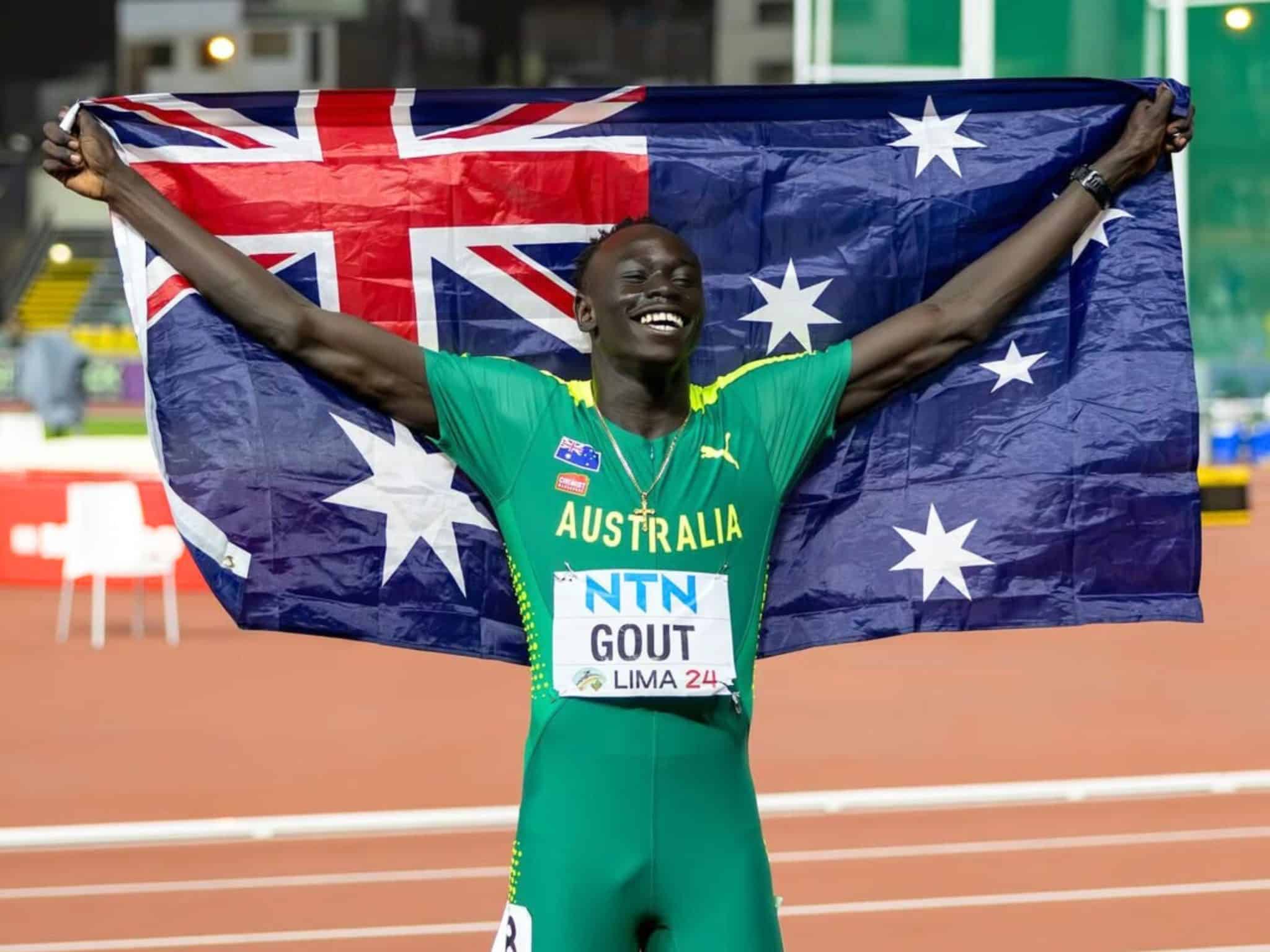Australians know ‘schoolies’ as the week-long celebration for high school graduates that takes place after final exams in late November and early December.
The same calendar period brings the Australian All Schools championships. ‘Schoolies’ for high school athletes, if you like. Except for one thing: you only get one chance at ‘normal’ schoolies, whereas athletics schoolies is contested in annual age groups from U14 to U18. So, you can get five goes.
Regular ‘schoolies’ has toned down a bit in recent years – hasn’t everything? – but it remains a time when teenagers get pretty lit up. There was a bit of lighting up done at this year’s All Schools, too, the most incandescent sparks coming from 16-year-old Gout Gout.

What did Gout Gout (17 on 29 December) do? Well, in case you’ve been on Mars for the week, the teen prodigy only went and broke the oldest record on the Australian books in winning the U18 200 metres final in 20.04 seconds. Most reports go with just “smashed it,” but that sliced 0.02 off the 20.06 run by Peter Norman in taking a silver medal at the Mexico City 1968 Olympic Games.
Surprise enough in itself. But Gout Gout broke the Australian men’s senior record, a record moreover that was good enough for an Olympic silver medal and had stood for just over 56 years. Not only that, but in the 100 metres the previous day he had run a wind-aided 10.04 in his heat followed by a legal 10.17 in the final.
Schoolies in its traditional alcohol-and-parties format has regularly produced fireworks. So, too, the athletics version, albeit less frequently. When Gout Gout took to the track in Brisbane last week, however, it was as if a pyromaniac had been let loose in the fireworks factory with a box of matches. Explosions everywhere.
View this post on Instagram
Gout is clearly the next big thing. No prizes for guessing that. But even before he had regained his breath, there was a rush to anoint him as the face of the Brisbane 2032 (emphasis mine) Olympic Games, Usain Bolt’s natural successor, the next holder of the world records for 100 and 200 metres, and first president of the Republic of Australia (I think I made that last bit up, but who knows).
Actually, Gout’s manager James Templeton, who does know a thing or two, has spent almost as much of the past week hosing down expectations as he has talking up his athlete’s performances. When ABC Radio’s Ali Moore put the Bolt comparison to him, Templeton said he didn’t want “to use the comparison.” Bolt, he said, was “the greatest ever.”
Templeton also told Moore he was saying “No” to media requests for interviews all of the time, and that would continue into and beyond next year as, academically, Gout heads into year 12 and, athletically, goes off to Florida to train with Paris Olympic 100 champion Noah Lyles for two weeks in January, headlines Melbourne’s Maurie Plant Meeting in March, and competes at the world championships in Tokyo in September (his 20.04 bettered the automatic qualifying time).
It’s a fine plan, but you get the impression Templeton and Gout’s coach, Di Sheppard, will be spending a fair bit of their time in the next 12 months sitting on the lid of a pot bubbling over with expectations. Gout will hopefully be able to retreat into his year 12 studies.
As we ponder what’s to become of Gout Gout (and wonder what will happen at the Zatopek!), let’s go back to the only other time this writer can recall a senior national record being broken at the All Schools.
Come on down Tim Forsyth! Forsyth, hailing from the potato-growing town of Thorpdale in Victoria’s Gippsland region and a lanky teenage epitome of his subsequent nickname “Slim Tim,” jumped a massive 2.31 metres to win the U19 (the age groups went one year higher then) high jump.
He had to jump that high. Lochsley Thomson, the NSW schoolboy who finished second, cleared 2.27. My admittedly hazy memory of the contest is that Thomson led on countback to that point, so Forsyth had to make 2.31 to win.
The young rivals had both turned 18 a couple of months earlier – Thomson on 6 August, Forsyth on 18 August. Forsyth had already made something of a mark. Like Gout, he was a silver medallist at the previous world U20 championships, and he had done enough to be selected for the world championships in Tokyo in August of 1991 (another possible Gout echo).
Forsyth distinguished himself by wearing an Aussie Rules football jumper on the Tokyo high jump apron, where he relaxed by bouncing an Aussie Rules ball he had taken from his competition kit. Despite this outward appearance of relaxation, Forsyth did not make it through qualifying.
Forsyth and Thomson took divergent paths after that. Both made the 1992 Olympic team, but while Forsyth jumped an Australian record 2.34 to share the bronze medal, Thomson failed to reach the final. At the Commonwealth Games two years later, Forsyth won while Thomson finished sixth.
That was about it for Lochsley Thomson, but Forsyth remained a regular finalist in world and Olympic competition and took another bronze medal at the world championships in Athens in 1997. He bowed out at the Sydney 2000 Olympics.
Tim Forsyth won the first of his six national titles in 1991. He took the title again the following year, clearing 2.33 ahead of David Anderson and Thomson, who both got over 2.31. This remains the only national title in which all three medallists have cleared 2.30 or higher.
Forsyth cleared at least 2.30 in five of his six national titles. In terms of clearances of 2.30 and higher, Forsyth has 38 of the 62 such jumps by Australian men. Brandon Starc is next best with 15, followed by Joel Baden with three.
View this post on Instagram
If Gout Gout can compile similar statistics in the 100 metres, 200 and – who knows – 400 in the coming decade, stand by for one heck of a ride.
